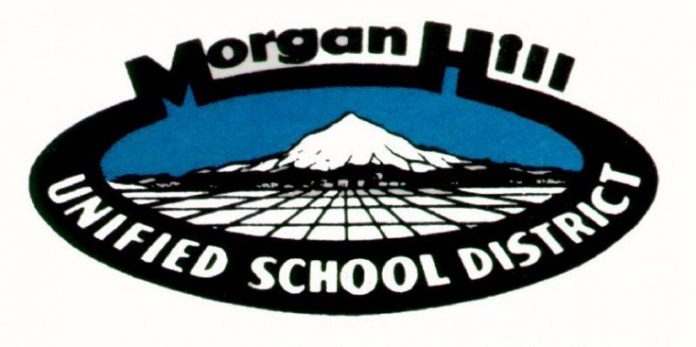The Morgan Hill Unified School District is drawing up a resolution to pursue a school bond that could fund upgrades, repairs and modernizations for its 16 school sites.
While a recently conducted survey that questioned 400 Morgan Hill voters revealed there is good support for a parcel tax, “the threshold is too high,” according to Jon Isom, a consultant with the firm hired by the district to help conduct the survey.
Whereas a parcel tax would require a two-thirds, or 66.6 percent vote, school board trustees are more confident about a general obligation bond that only needs a 55 percent vote to pass.
“We’d like to think that we can get at least 55 percent of the community to support it,” said MHUSD Trustee Bob Benevento.
Not only that, but “we tried a parcel tax about six years ago,” added MHUSD Deputy Superintendent Bonnie Tognazzini. “I think our community has already told us in one environment that a parcel tax wouldn’t be well supported.”
One perk associated with a school bond “is that the money stays local,” Tognazzini pointed out. “The state has a tendency to re-capture resources from school districts and keep it for themselves. If the community were to pass this, we get to use those dollars locally and the state can’t touch it.”
When asked during the survey about a general obligation bond, 59.8 percent of respondents said they would say “yes” if an election were held today.
In order to generate the estimated $244 million needed for new classroom technology, water-damaged roofs, deteriorating plumbing, outdated HVAC systems, inadequate electrical circuits and a plethora of other issues, MHUSD is exploring a general obligation bond that would be used to renovate existing facilities, as well as construct new schools and classrooms. The average age of MHUSD’s school sites is 36-years-old, with Britton Middle School – which was built in 1951 – being the oldest.
“The district needs hundreds of millions of dollars in investments,” said Trustee Benevento. “Our schools are aging and many things are being studied, from utilities, to modernizations, to basic mechanical, plumbing and electric problems, furniture fixtures and transportation issues.”
One example examined by the MHUSD during its board of education meeting Tuesday night was a tax rate of $60 per $100,000 of assessed value per year, which will generate up to $195 million in bond proceeds.
When voters were asked during the survey about the specifics on tax tolerances for a bond measure, 53.8 percent preferred a $50 a year per $100,000 in assessed value.
Prior to meeting again June 12, the MHUSD bond committee will review a detailed list of the facility needs, and identify the priority of each project.
The committee will then present to the school board for approval a resolution that calls for a bond election on the November 2012 ballot.
Should the measure come to fruition, the MHUSD bond committee underlines a handful of “benefits for all” associated with a bond, including:
- A better learning environment for local students.
-
Taxpayer safeguards are in place, since funds raised cannot be taken by the state and must be spent locally. Bond expenditures, additionally, must be reviewed annually by an independent citizens’ oversight committee.
-
Technology endowment: A portion of the bond money can be used for a technology endowment that would be implemented over time; allowing the district to keep pace with the technology advancements.
-
Technology upgrade: Within the past 10 years, there have been monumental gains in classroom-friendly technology that is highly conducive to learning.
-
Keeping money in the classrooms: Energy efficiency improvements and critical facility repairs can be paid for by a school bond.
Among these items, keeping pace with technology is a major sticking point.
“We’re proud of how we’ve maintained our facilities, given our resources, but there’s much more that could be done,” said Tognazzini. “We’re in the bedroom community of Silicon Valley and we have a long way to go to catch up.”
With a significant number of California schools progressing towards technology-based learning, MHUSD wants to get on board with the galaxy of student-friendly online courses that are becoming available to teachers. Upgrading the district’s technology infrastructure would provide more Internet bandwidth, allow students to learn at their own pace and access more online courses that would increase opportunities for student advancement, according to the district. Taking these steps will “better prepare students for success in high school, college and the workforce,” according to a facilities needs presentation given Tuesday during the school board meeting.
This isn’t the first time MHUSD has attempted to take funding into its own hands.
The district passed a $72.5 million bond in 1999 with the current tax rate at $75.10 per $100,000 in assessed value with a 27-year pay back period that ends in 2026. When surveyed voters were asked if they would not raise taxes – but continue the tax rate that was approved in 1999, 64.2 percent said they would “much/somewhat more” support the extension.
In 2006, Morgan Hill voters defeated a $96 a parcel tax with just 55.5 percent support the measure, shy of the 67 percent needed. The proposed parcel tax was to fund technology, fine arts and athletic programs in MHUSD.
If the school board approves the bond resolution during its June 12 meeting, Tognazzini isn’t sure what it will cost MHUSD to pursue a school bond all the way to the ballot. Expenditures are contingent on how the district decides to facilitate its campaign, which must be paid for via fundraising outside the district’s general fund.
“In today’s economy, school districts are suffering at the hands of decisions made at the Capitol,” said Benevento. “While Morgan Hill has been perhaps more fortunate than some of our neighbors in how we’ve managed our moneys, we’ve suffered substantial hits to our budget … we hope to elicit the support of the community in our efforts.”








